TANGIBLE HERITAGE

Taj Mahal
Location: Agra, Uttar Pradesh
Inscribed on: 1983
A beauty beyond words, Taj Mahal is one of the most recognized monuments in the world. The iconic white-marble mausoleum is one of the Seven Wonders of the World.
Khajuraho Group of Monuments
Location: Khajuraho, Madhya Pradesh
Inscribed on: 1986
Encompassing masterpieces of architecture, The Khajuraho Group of Monuments stands a class apart. The group of Hindu and Jain Temples are well known for erotic figures and sculptures depicting Nagara style symbolism.


Group of Monuments at Hampi
Location: Karnataka
Inscribed on: 1986
Once the pride of the prosperous kingdom of Vijayanagara, Hampi is now a fascinating UNESCO World Heritage site in Karnataka. The magnificent specimens of Dravidian art and architecture date back to the 16-17th centuries.
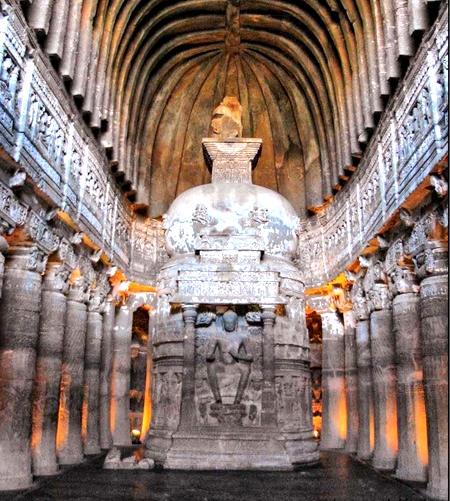
Ajanta Caves
Location: Ajanta Caves, Maharashtra
Inscribed on: 1983
Dating back around the 2nd- 6th century CE, Ajanta Caves comprise of the finest masterpieces of 31 rock-cut Buddhist cave monuments, paintings, and sculpture.
Mahabodhi Temple Complex at Bodh Gaya
Location: Bodh Gaya, Bihar
Inscribed on: 2002
Bodh Gaya's Mahabodhi Temple Complex is one of the UNESCO World Heritage sites in India. It’s an important religious centre for the Buddhists as this was the place where Lord Buddha attained enlightenment.


Ellora Caves
Location: Aurangabad, Maharashtra
Inscribed on: 1983
The Ellora Caves are an important World Heritage site in India and an archaeological site, ranging 29 kilometers north-west of the city of Aurangabad. The Ellora Caves are well known for their Indian-rock cut architecture.

Sun Temple, Konark
Location: Konark, Odisha
Inscribed on: 1984
The Sun Temple at Konark a 13th-century temple situated in Konark, Odisha. It was built by king Narasimhadeva I of the Eastern Ganga Dynasty in around AD 1250.
Red Fort Complex
Location: Red Fort Complex, Delhi
Inscribed on: 2007
Situated in the centre of the historic city of Delhi, the Red Fort was built by Mughal emperor Shah Jahan. The fortress was the imperial seat when the Mughal ruler shifted his capital from Agra to Delhi...

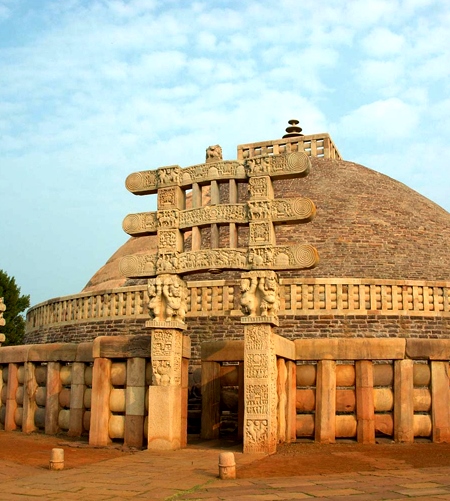
Buddhist Monuments at Sanchi
Location: Sanchi, Madhya Pradesh
Inscribed on: 1989
The Buddhist Monuments located at Sanchi in Madhya Pradesh are a manifestation of Heritage of India and they are the oldest stone structures in India.

Great Living Chola Temples
Location: Tamil Nadu
Inscribed on: 1987
The Great Living Chola Temples were built by kings of the Chola Empire, which stretched over all of south India and the neighbouring islands.
Kaziranga Wildlife Sanctuary
Location: Assam
Inscribed on: 1908
Kaziranga National Park, a famous UNESCO World Heritage site is located in Nagaon and Golaghat districts of Assam on the southern bank of the Brahmaputra River.


Group of Monuments at Mahabalipuram
Location: Mahabalipuram, Tamil Nadu
Inscribed on: 1984
The Temples are situated in the town of Mahabalipuram which is approximately 58 kilometres from Chennai in the Coromandal Coast of Bay of Bengal.

Sundarban National Park
Location: West Bengal
Inscribed on: 1984
The Sundarbans contain the world's largest mangrove forests and one of the most biologically productive of all natural ecosystems.
Humayun's Tomb
Location: New Delhi
Inscribed on: 1993
Introduced several innovations by the time it was built, this tomb was commonly referred to as the precursor to the Taj Mahal. Built-in the 16th century, it was listed by UNESCO as a heritage site.
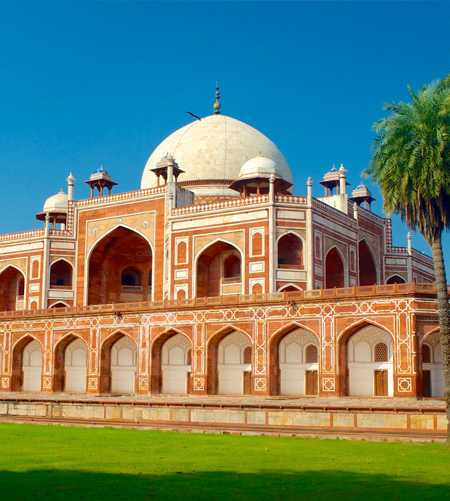

Jantar Mantar - Jaipur
Location: Jaipur, Rajasthan
Inscribed on: 2010
The Jantar Mantar is an astronomical observatory built in 18th century Rajasthan. It is an astronomical observatory that was built by the Rajput King Sawai Jai Singh of Rajasthan in 1738 CE.

Agra Fort
Location: Agra, Uttar Pradesh
Inscribed on: 1983
The Agra Fort is one of the most important monumental structures built by the Mughal empire. Though built in Mughal Era, during the time of Akbar...
Fatehpur Sikri
Location: Agra, Uttar Pradesh
Inscribed on: 1986
The capital of the Mughal Empire for only a decade before being abandoned, Fatehpur Sikri is the 'City of Victory'. The name of the city itself denotes the victory (Fateh) of Akhbar over Chittor and Ranthambore...

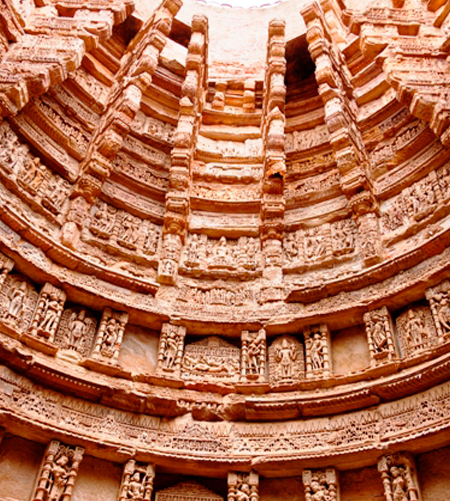
Rani Ki Vav
Location: Patan, Gujarat
Inscribed on: 2014
Built in the 3rd millennium BC in the memory of the kings, its an explicit example of fine Ancient Indian architecture. Constructed during the time of the Solanki dynasty...
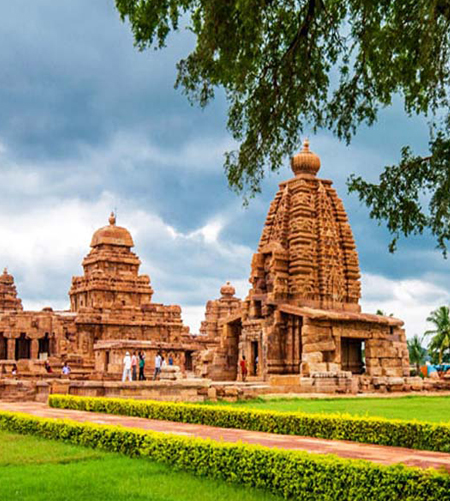
Group of Monuments at Pattadakal
Location: Pattadakal, Karnataka
Inscribed on: 1987
Pattadakal is famous for its Chalukya style of architecture that originated in Aihole and blended with the Nagara and Dravidian styles of architecture.
Elephanta Caves
Location: Elephanta Caves, Maharashtra
Inscribed on: 1987
The Elephanta caves are located on an island in the Arabian City, not very far from the city of Mumbai. The chain of sculpted caves located on Elephanta Island is also known as Gharapuri.

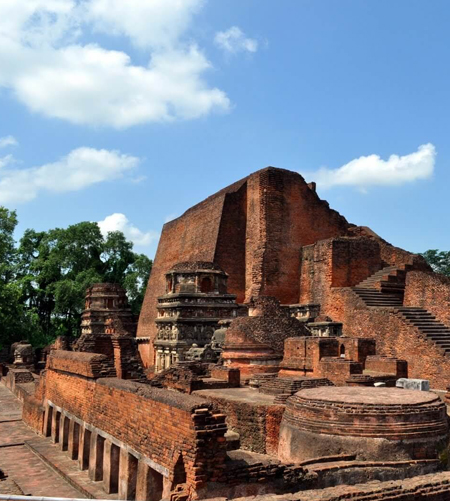
Archaeological Site of Nalanda Mahavihara at Nalanda, Bihar
Location: Nalanda, Bihar
Inscribed on: 2016
The Nalanda Mahavihara site is in the State of Bihar, in north-eastern India. It comprises the archaeological remains of a monastic and scholastic institution dating from the 3rd century BCE to the 13th century CE.

Chhatrapati Shivaji Maharaj Terminus
Location: Maharashtra
Inscribed on: 2004
The Chhatrapati Shivaji Terminus, formerly known as Victoria Terminus Station, in Mumbai, is an outstanding example of Victorian Gothic Revival architecture in India, blended with themes deriving from Indian traditional architecture.
Mountain Railways of India
Location: Indian Hills
Inscribed on: 1999
The Mountain Railways of India are the best example of bold, ingenious engineering solutions for the problem of establishing an effective rail link through rugged, mountainous terrain.


Qutub Minar Complex
Location: New Delhi
Inscribed on: 1993
Qutub Minar, which was constructed in 1193 by the first ruler of the famous Slave Dynasty. The monument is nestled amid the Qutub Complex which also houses may other popular and historically significant monuments.
Champaner Pavagadh Archaeological Park
Location: Panchmahal, Gujarat
Inscribed on: 2004
The Champaner-Pavagadh Archaeological Park is a UNESCO World Heritage Site located in the Panchmahal district of the Indian state of Gujarat. Centered around the city of Champaner...
The Great Himalayan National Park
Location: Himachal Pradesh
Inscribed on: 1984
This National Park in the western part of the Himalayan Mountains in the northern Indian state of Himachal Pradesh is characterized by high alpine peaks, alpine meadows, and riverine forests.


Hill Forts of Rajasthan
Location: Rajasthan
Inscribed on: 2013
Finding its place in the elite list of World Heritage Sites, Hill Forts of Rajasthan are the epitome of incredible architecture and defensive strategy in addition of being witness to some of the most interesting episodes of history.

Churches and Convents of Goa
Location: Goa
Inscribed on: 1986
The 15th and 16th centuries mark the coming of the Portuguese to India and they established themselves at Goa, along the Konkan coast in the South-western part of India.
Rock Shelters of Bhimbetka
Location: Amchha Khurd, Madhya Pradesh
Inscribed on: 2003
The Rock Shelters of Bhimbetka are in the foothills of the Vindhyan Mountains on the southern edge of the central Indian plateau.


Manas Wildlife Sanctuary
Location: Assam
Inscribed on: 1990
Manas Wildlife Sanctuary is located in the State of Assam in North-East India, a biodiversity hotspot. Settled in the beauty of the Eastern Himalayas, nurtured by the Manas river...
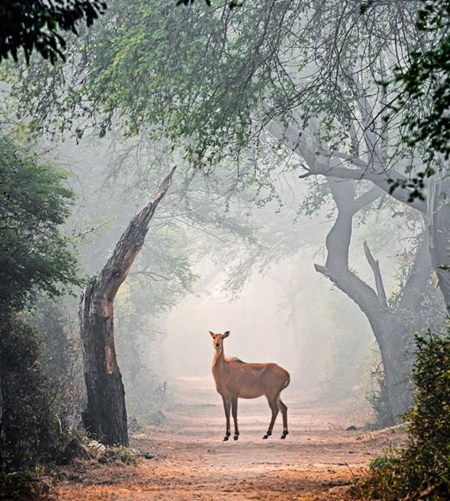
Keoladeo National Park
Location: Bharatpur, Rajasthan
Inscribed on: 1982
Keoladeo National Park situated in the Bharatpur region of Rajasthan is listed as a UNESCO World Heritage Site. The former duck-hunting reserve of the Maharajas is one of the major wintering areas...
Nanda Devi and Valley of Flowers National Park
Location: Uttarakhand
Inscribed on: 1982
Nestled high in West Himalaya, India’s Valley of Flowers National Park is renowned for its meadows of endemic alpine flowers and outstanding natural beauty.
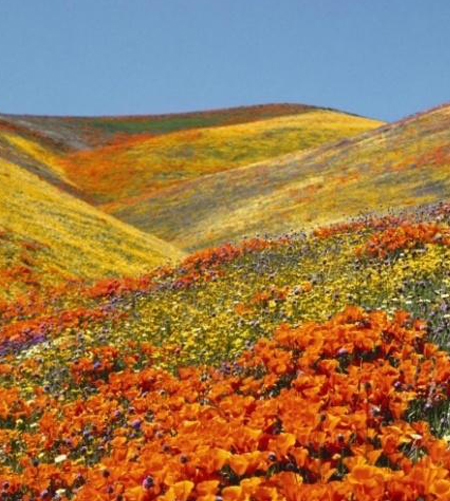

Western Ghats
Inscribed on: 2012
The Western Ghats or the Sahyadri mountain ranges lies along the western coast of the Indian Peninsula. The range runs north to south along the western edge of Deccan Plateau.
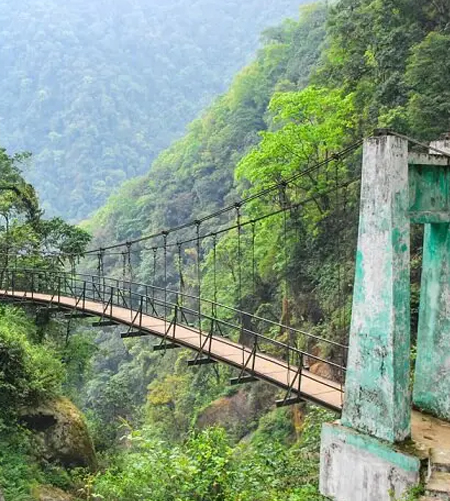
Kanchenjunga National Park
Location: Sikkim
Inscribed on: 2016
Located at the heart of the Himalayan range in northern India (State of Sikkim), the Khangchendzonga National Park includes a unique diversity of plains, valleys, lakes, glaciers and spectacular...
The Architectural Works of Le Corbusier
Location: Chandigarh
Inscribed on: 2016
The architectural work of Le Corbusier across many countries, including the Capital Complex of Chandigarh is recognized as a World Heritage Site as part of an outstanding contribution to Modern Movement.
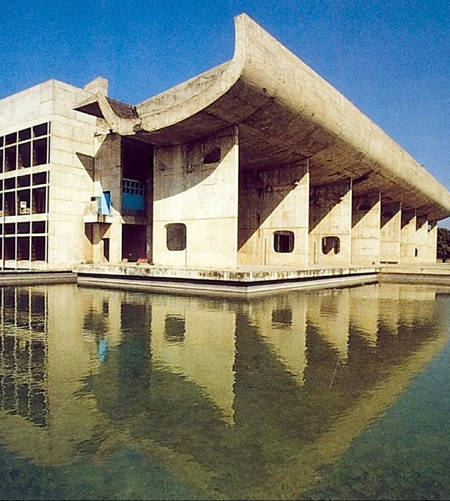
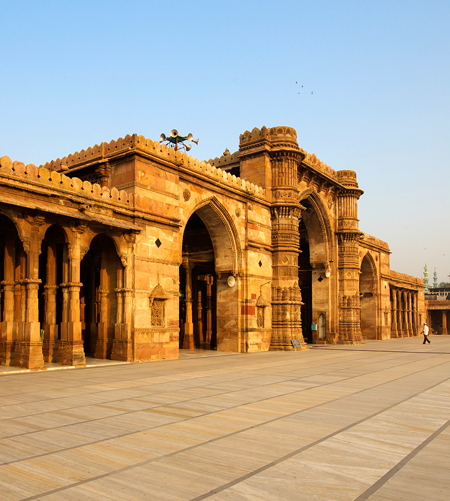
The Historic City of Ahmedabad
Location: Ahmedabad
Inscribed on: 2017
The first city of India to enter the list, Ahmedabad was declared as the World Heritage City on July 8, 2017. The city of Ahmedabad has close to 25 ASI (Archaeological Survey of India) protected structures.
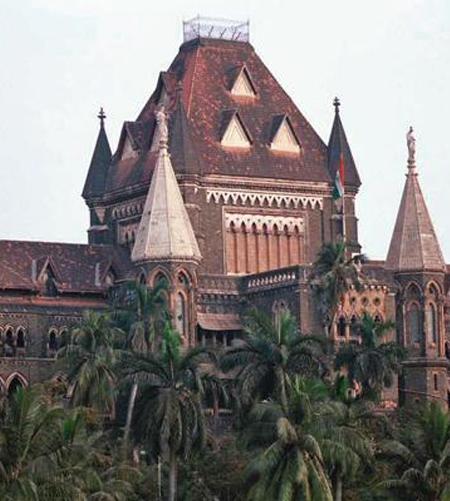
Victorian and Art Deco Ensemble of Mumbai
Location: Mumbai
Inscribed on: 2018
The Victorian and Art Deco Ensemble of Mumbai is a collection of 94 buildings of great cultural importance, located in the Fort Area of Mumbai, set around the Oval Maidan, previously known as Esplanade.

Jaipur Walled City
Location: Jaipur, Rajasthan
Inscribed on: 2019
India’s Pink City, Jaipur is a recent entry on the UNESCO World Heritage sites list. The 18th-century walled city is one of the most glamorous testaments of the era of Rajputs and the unique elegance of Rajasthan.


